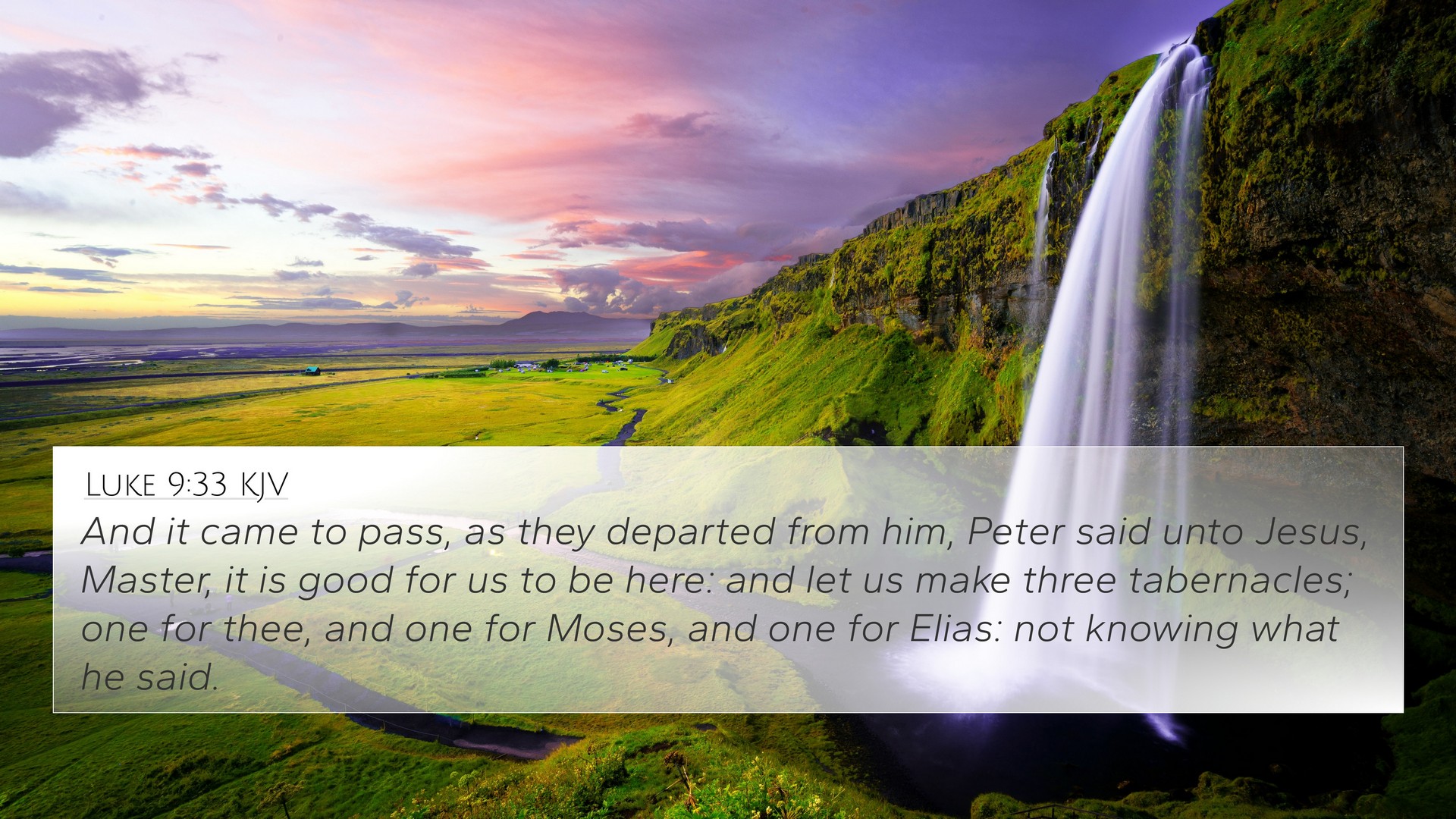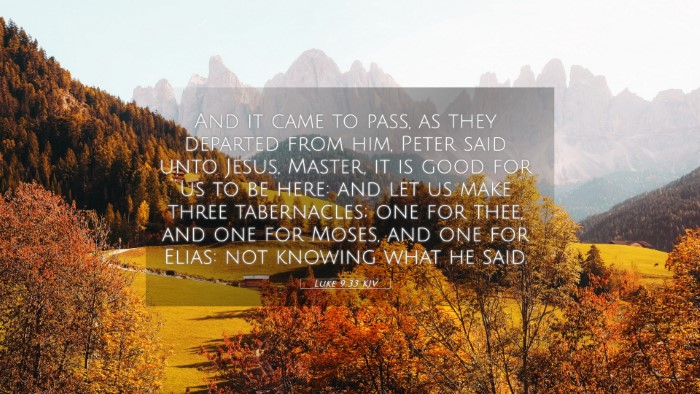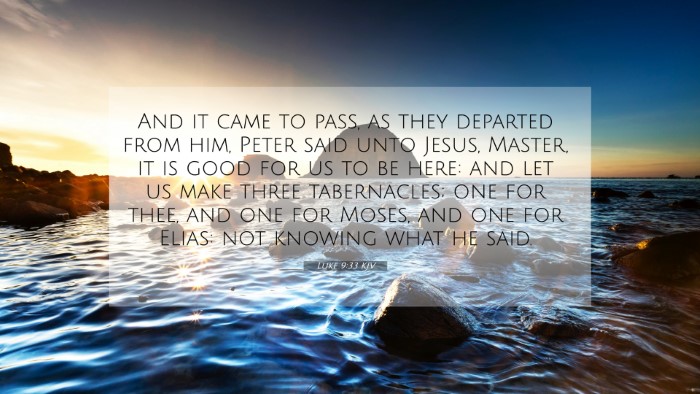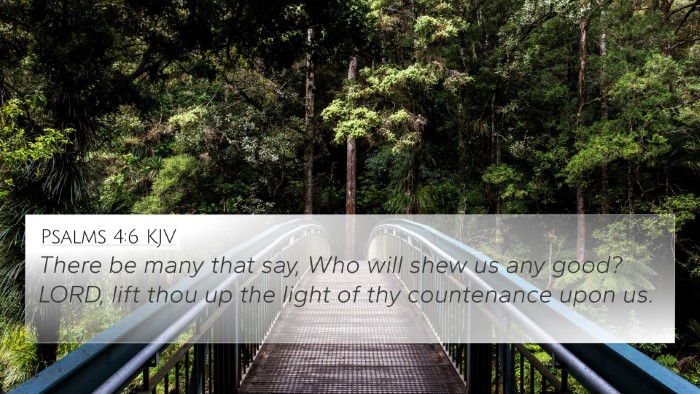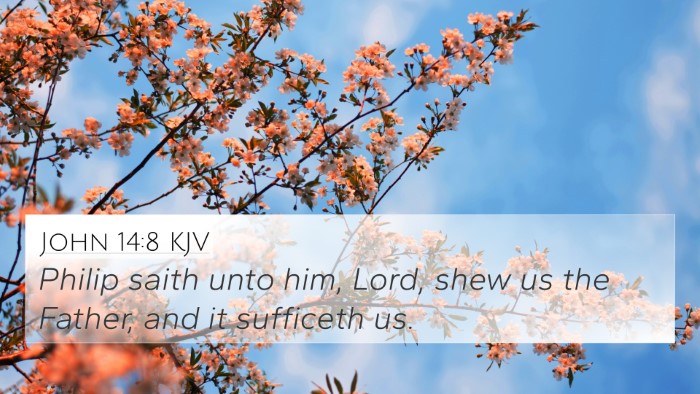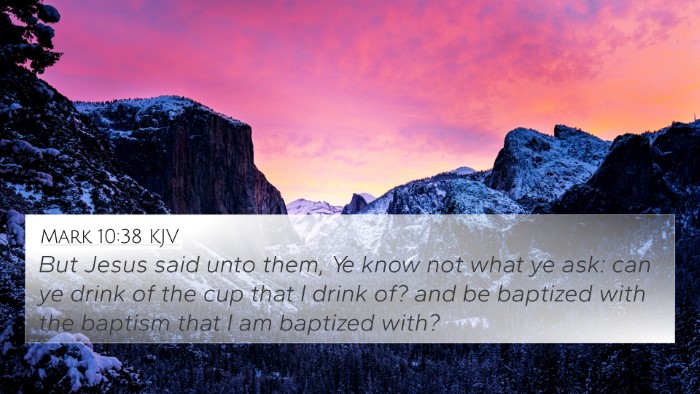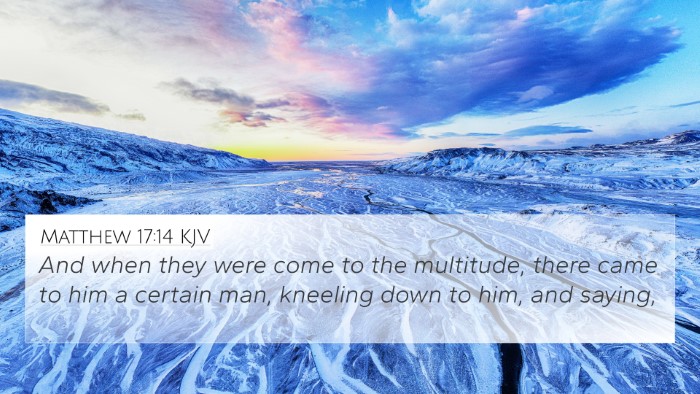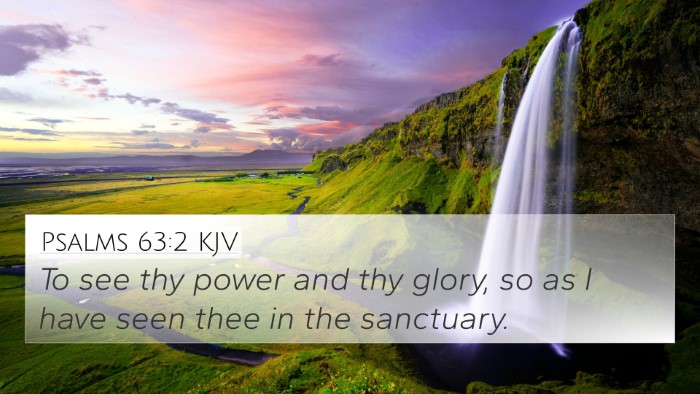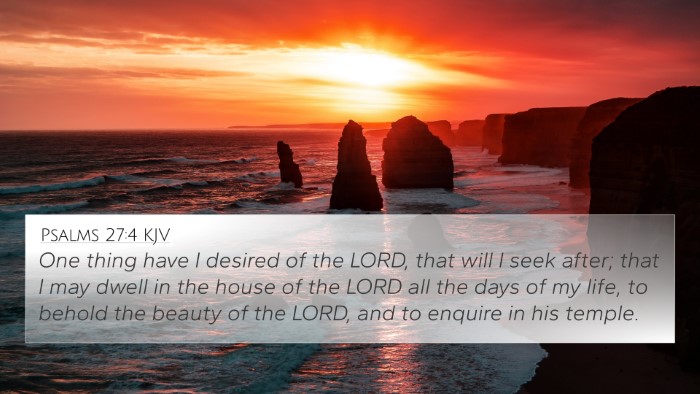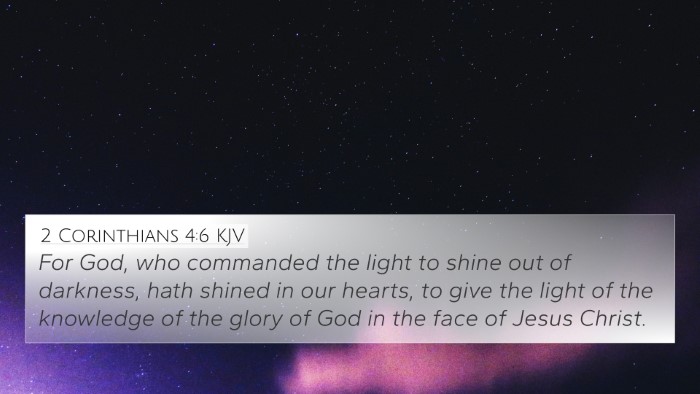Understanding Luke 9:33
In Luke 9:33, we find the verse where Peter exclaims, "Master, it is good for us to be here: and let us make three tabernacles; one for thee, and one for Moses, and one for Elias: not knowing what he said." This remarkable scene takes place during the Transfiguration of Jesus, an event steeped in significance and theological implications.
Context of the Verse
This verse follows the miraculous Transfiguration where Jesus is revealed in divine glory alongside Moses and Elijah. Each character—Jesus, Moses, and Elijah—symbolizes significant elements in the Jewish faith, representing the Law and the Prophets. The placement of this verse stresses the confusion and awe that surrounds the disciples during this profound moment.
Commentary Insights
Matthew Henry
Matthew Henry provides a detailed analysis of this verse, emphasizing Peter's impulsiveness and lack of understanding. He notes that Peter's desire to build tabernacles reflects a desire to prolong the moment of glory without grasping the upcoming necessity of Jesus' suffering. Henry suggests that this highlights human tendencies to cling to joy without fully engaging with the path of discipleship that includes suffering.
Albert Barnes
Albert Barnes points to the significance of the three tabernacles. He interprets Peter's suggestion as a misunderstanding of the situation; he likens it to the Jewish custom of celebrating the Feast of Booths, which involved building temporary shelters. Barnes emphasizes that Peter’s statement indicates a need for revelation and understanding of the events unfolding around him, reflecting how humans often wish to encapsulate spiritual experiences rather than process their implications.
Adam Clarke
Adam Clarke elaborates on the concept of recognition in spiritual experiences. He explains that Peter, in his awe, failed to comprehend the full picture of Christ’s mission, which was not merely to establish a kingdom of glory but also to fulfill His destiny through suffering. Clarke reinforces the idea that the disciples were caught in a moment of exhilaration, yet they needed a deeper understanding that transcended their immediate emotional response.
Key Themes
- Human Impulsiveness: Peter's immediate suggestion shows our tendency to want to stay in moments of spiritual ecstasy.
- The Law and the Prophets: Moses and Elijah’s presence denotes the fulfillment of the Old Testament in Christ.
- Need for Revelation: The disciples required greater insight into the true nature of Jesus’ mission.
- Preparation for Suffering: The glory of God that Peter witnessed was inextricably linked to the suffering that was to come.
Bible Verse Cross-References
Luke 9:33 can be linked to several significant verses throughout the Bible that expand on its themes:
- Matthew 17:1-8: The parallel account of the Transfiguration reinforces the significance of the event and the divine affirmation of Jesus as the Son of God.
- Exodus 34:29-35: Moses’ radiant face after meeting God connects with the glory seen during the Transfiguration.
- Mark 9:2-8: Another account of the Transfiguration that echoes the significance of this moment in the Gospels.
- 2 Peter 1:16-18: Peter himself refers back to this event as a crucial testimony to Jesus’ divine glory.
- Isaiah 53:3: The foreshadowing of Christ’s suffering connects to Peter’s misunderstanding of Jesus’ mission.
- John 1:14: The revelation of Jesus’ glory as the Word made flesh ties back to thematic elements presented in the Transfiguration.
- Acts 3:22-23: References to Moses' prophecy, illuminating how Jesus is central to the fulfillment of the Law.
Theological Implications
The implications of Luke 9:33 stretch beyond mere observation; they challenge believers to reflect on their understanding of Christ and the nature of divine events. The desire to erect tabernacles encapsulates the human inclination to seek comfort in the familiar, rather than embracing the challenging path of faith that includes tribulation and service. Such moments call for deeper contemplation and active engagement with the journey of faith.
Connecting Themes
This verse significantly interacts with broader theological themes found throughout Scripture, including:
- The Glory of God: Understanding the magnificence of Christ in relation to His sacrificial purpose.
- Discipleship: The call to follow Jesus includes acknowledging the duality of suffering and glory.
- Revelation: The importance of spiritually discerning moments of divine significance.
Practical Application
As contemporary believers, this verse encourages us to remain grounded in our understanding of faith. We must not only cherish moments of spiritual insight and clarity but also understand the necessity of preparation for challenges ahead. Embracing both the awe and the trials of faith allows for a holistic experience of discipleship. The human tendency to cling to the ‘mountaintop’ experiences of faith should lead us to deeper trust in God’s overall plan, which includes both glory and suffering.
Conclusion
Luke 9:33 serves as a potent reminder of the dynamic relationship between divine moments and human misunderstanding. This verse invites us to delve deeper into Scripture, utilizing cross-referencing tools to identify deeper connections between texts. Embracing these connections enhances our comprehension of biblical teachings and enhances our faith journey.
